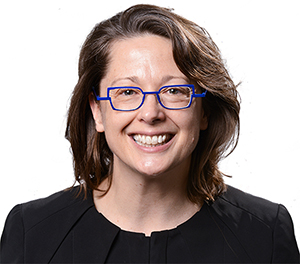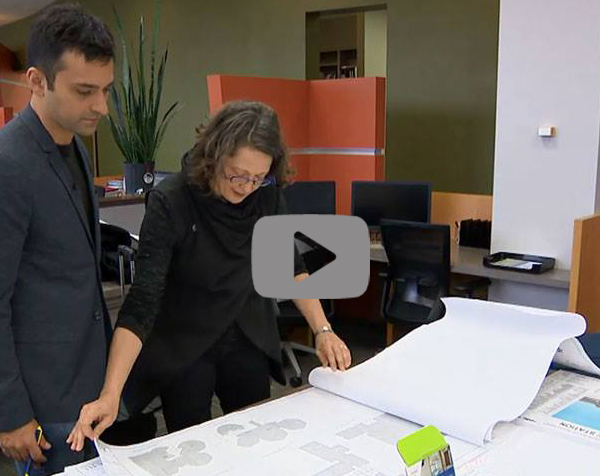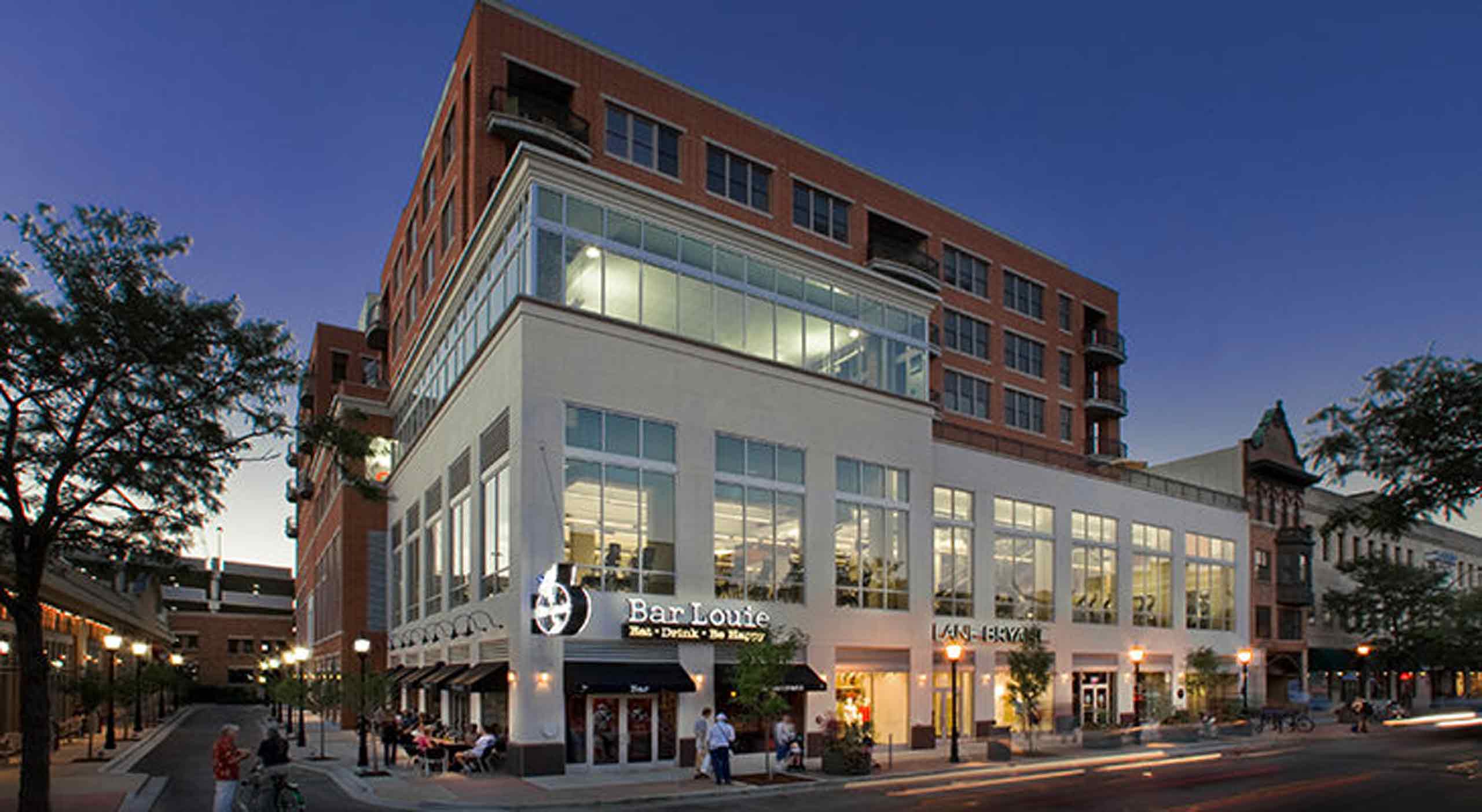
Student learning first: Association for Learning Environments names Robin Randall one of only eight Accredited Learning Environments Planners in State of Illinois
During a planning session for a high school facility upgrade, a community member shouted, “You are not tearing down our building! It’s a historic monument!” He then stormed out of the meeting.
Architect Robin Randall, who was leading the session, stepped out. She found the gentleman in the hallway, where he was reprimanding the district superintendent. “You can’t tear down this building,” said the community member, “and there’s no way you can put 21st century learning in a near century-old building.”
Randall assuaged the man; she told him that many high school construction projects have created better learning environments while preserving beloved facilities.
During succeeding meetings, Randall led discussions that paved the way for historically-sensitive renovations and additions. The same community member who was so distraught at the beginning became a strong supporter of the high school construction project. He even helped the district pass a major referendum that funded the project.
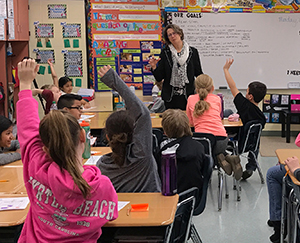
This is one of many examples of how Randall, leader of Legat Architects’ preK-12 segment, has worked with schools and communities to put students at the center of the design process. With her calling cards of “transform purpose into place” and “make the building a teaching tool,” Randall has dedicated her 30-year career to planning and designing school settings that improve student performance. The Ball State University alumnus and past Judson University graduate instructor has led hundreds of projects ranging from early education centers to high schools. She has also promoted learning and growth . . . for her coworkers, for educational clients, for the architectural community, and for students of all ages.
The Association for Learning Environments (A4LE) has endorsed Randall’s expertise by naming her one of only eight Accredited Learning Environments Planners (ALEP) in the State of Illinois. The credential not only substantiates her mastery of the seven Core Competencies related to educational planning, but also validates her efforts to elevate the educational design industry.
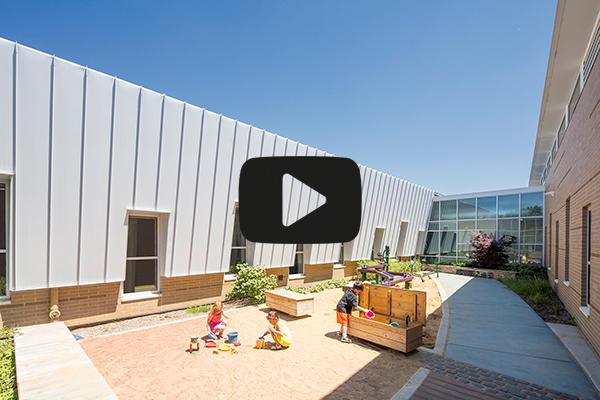
A4LE states that “an individual who has been certified by A4LE has achieved the highest qualification in our profession. Clients can appoint ALEPs with confidence that they have been examined for competence by our association.”
To achieve the accreditation, Randall had to submit a portfolio including references from educational leaders, then interview with a panel of peers at the organization’s annual LearningSCAPES conference.
Amy Yurko, principal and founder of BrainSpaces, Inc., said, “With her straightforward style and depth of experience, Robin has a brilliant power of persuasion, pushing clients to achievements they hardly thought possible.”
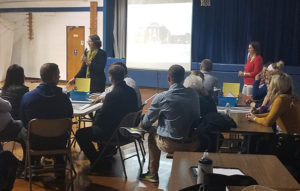
Everyone’s Voice Gets Heard
Among the many topics that Randall has covered in presentations and workshops are integrating nature into learning settings, how buildings teach kindness, and building safer schools. Her audiences have ranged from kindergartners to graduate students . . . from a single administrator or a handful of teachers to more than 500 community members.
She has been involved from the earliest stages of pre-referendum community master planning to post-construction studies that determine how architecture impacts learning.
“Robin never approaches school projects with a formulaic solution,” said Patrick Brosnan, Legat president and CEO and fellow ALEP. “She listens to students, school personnel, and community members to help define the problem before jumping in to solve it. The resulting solutions improve learning, support curricula, and advance students.”
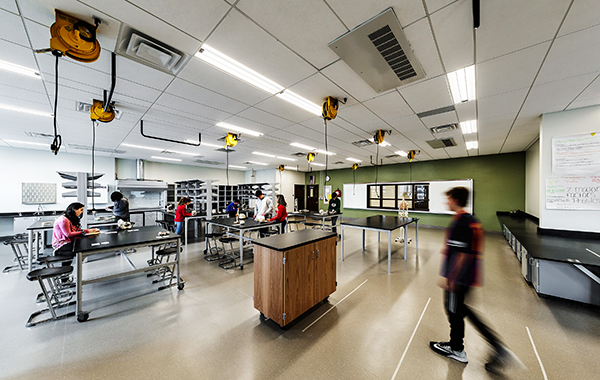
The STEM of Major Renovations
At LaSalle-Peru Township High School District 120, Randall led community workshops, then developed a master plan and model classroom that fueled the passage of a $38 million referendum. It paid for seven phases of renovations and historic restorations completed over three summers at LaSalle-Peru High School. The upgrades refreshed 95% of the school’s interior spaces and created more collaborative nodes based on Randall’s research.
When the concept of shared classrooms was introduced, teachers pushed back. Randall worked with school stakeholders to develop a solution: let teachers have their own classrooms, but also create shared rooms with higher levels of technology and more flexible furniture. Today, the collaborative rooms are booked frequently.
Initial plans called for locating a new STEM lab in a small space. However, Randall recognized the school’s growing STEM-related curriculum would benefit with a much larger space. She joined the district superintendent and contract manager to negotiate getting more space from the school’s Family & Consumer Sciences Division. It was a win-win result: the 40% larger STEM lab became a showcase space while Family & Consumer Sciences received advanced equipment for its new space.
District Superintendent Dr. Steven Wrobleski said, “We were able to put learning on display with our new STEM lab, co-labs, and student resource areas. These were enhancements that Robin was instrumental in guiding us to prioritize.”
Advancing the Architecture Industry
Randall’s contribution to the educational design industry goes far beyond individual schools. For instance, she has written many articles and spoken at educational and design conferences throughout the world on topics such as girls in STEM, creating change in underserved communities, and school safety. WTTW’s Chicago Tonight interviewed Randall for its special on Building a Safer School.
Randall, referring to the present era as the “golden age of architecture,” has also helped intensify the dialogue about research-based design. To achieve more quantitative data, she has teamed with neuroscientists and behavioral scientists at Northwestern University to create pre- and post-occupancy evaluations that reveal objective data regarding what works and what needs improvement for educational facility projects. For instance, rather than choosing arbitrary colors for interiors, architects and interior designers are drawing from a growing body of research that shows how color impacts concentration and socialization.
Another of Randall’s missions is to develop environments that support students’ social-emotional learning. Her research has considered students with special needs ranging from those with learning disabilities to those who lean toward introversion. Randall’s research on “How Buildings Teach Kindness” was presented at the Academy of Neuroscience for Architecture in Berlin, and more recently at the EDspaces national conference in Milwaukee.
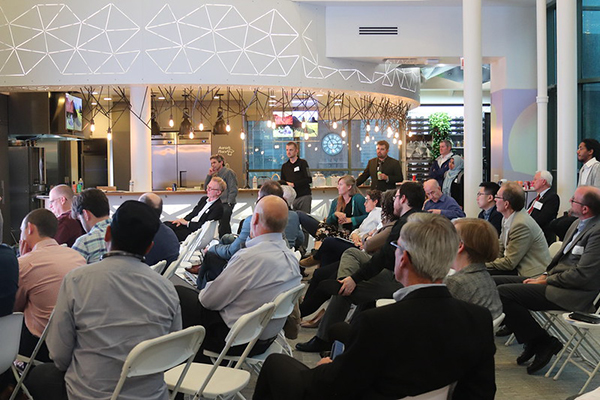
Think Tank
Five years ago, Randall assembled about 20 Legat employees to meet on a Saturday morning for what she called a “Think Tank.” It would be an opportunity to discuss where the educational design industry is going and how to prepare.
Today, Legat’s annual Think Tank has grown into a cross-disciplinary symposium and design competition that welcomes the architecture/engineering/construction industry, building owners, students, and community members. Speakers ranging from academics to urban planners have covered a variety of topics: biophilic design; health and safety; neuroscience and architecture; and the future of cities.

The Joy of Planning and Design
Though she always enjoys celebrating new or renovated schools, Robin Randall feels most rewarded when she sees the excitement of the school community—her true passion is working with administrators, teachers, students, and community members to achieve their vision.
“Planning and designing for a new school shouldn’t feel like a chore,” she said. “It should be a joy-filled experience.”
Ted Haug, Legat’s head of design, has witnessed the impact that Randall has had on educators since she arrived at the firm in 2013. “Not only has Robin helped create many school environments that promote empathy and inclusion, but she has also demonstrated these traits in her interactions with others. Her positive attitude has inspired many.”
“I have well over a billion dollars of school construction and renovation experience in four states with some of the nation’s best-known school architectural firms,” added Mike Maloney, director of operations at Davenport Community Schools. “Robin is without question among the nation’s finest K-12 thought leaders, a true visionary and creative architectural master.”
Contact us to with your educational facility planning/design challenges or comment below to share your thoughts on this post.
